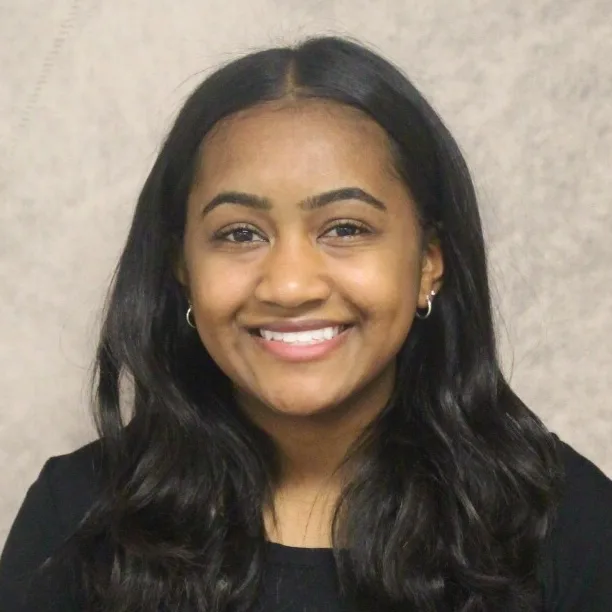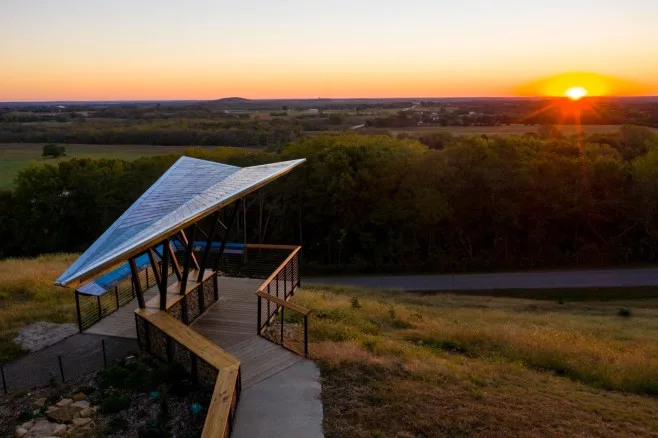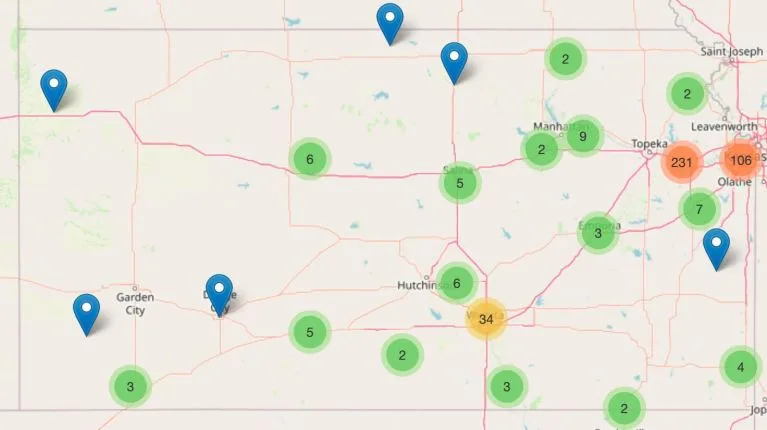The Lawrence school board on Monday approved two legal agreements: one that launches a partnership for a truancy prevention program, and another that establishes a partnership for a third party to facilitate some restorative justice agreements.
School board members during their meeting Monday voted 6-0, with board member Paula Smith absent, to unanimously approve a memorandum of understanding (MOU) with county agencies that’s designed to address truancy among students in the district. Its goal is prevention rather than diversion.
Board member Carole Cadue-Blackwood said she felt proud that the district has committed to the endeavor.
“As a Kickapoo Tribe of Kansas citizen and a Native American, and as an individual, I support social justice healing along with reintegrating individuals in their community,” Cadue-Blackwood said. “I believe it’s paramount. I am very glad that we’re to the point where not only this board but other groups and systems are looking at Native Americans and Black and Brown worldviews of how we repair problems with our community.”
District administrators and county partners initially presented the truancy prevention program to the board during its Aug. 28 meeting.
As district leaders became increasingly concerned about chronic absenteeism — missing 10% or more of school days for any reason — they devised the truancy prevention program. Its goal is to keep students on track with attendance, and in turn, keep them from being subjected to the criminal legal system for truancy.
Students are considered truant if they are absent without excuse for a “significant portion” of the school day for three days in a row, for five days in a semester, or for seven days in a school year. When students reach those thresholds, the district is mandated to report them to the Kansas Department for Children and Families. In an attempt to avoid that, if schools send a truancy warning letter home with students, they will also send a truancy prevention program flyer.
As part of the truancy prevention program, a program called SupportEd provides services for kindergarten students through eighth grade students. The O’Connell Children’s Shelter serves high schoolers. Both allot a mentor or a case manager who will help guide each student.
Board member Erica Hill previously raised concerns about an initial program flyer that portrayed a Black student as a program participant. She said the depiction was an oversight that reinforced stereotypes of students of color. Kelsey Dachman, founder and CEO of Center for Supportive Communities, on Sept. 15 said her organization had edited the flyer shortly after Hill voiced the issue.
Hill during Monday’s meeting said although she’s confident in the operation of the program, her vote to approve the partnership doesn’t negate the impact from the flyer situation.
“Some of these students, ‘at-promise students,’ you don’t get a second chance to make a first impression and to make a difference,” Hill said. “And so missteps like that could have a significant, detrimental impact on these students … My concerns, they stand, but I do see the bigger picture in getting this program up and going.”
Updates made to the previous draft of the MOU include minor edits and an additional section that gives an overview of the district’s approach to equity. Services provided by all other parties are summarized in the agreement, too.
The agreement includes the Douglas County district attorney’s Office, Kansas Department for Children and Families, Douglas County Criminal Justice Services – Youth Programs, Center for Supportive Communities and O’Connell Children’s Shelter. View the approved MOU on BoardDocs.
MOU on restorative justice facilitations
Board members on Monday also unanimously approved an MOU with Building Peace, a local organization that provides services in mediation, conflict resolution and restorative justice. The vote was part of the board’s consent agenda, a list of items that are considered altogether with one vote, unless a board member or the superintendent asks to pull an item for discussion.
Building Peace is currently partnering with the Douglas County district attorney’s office to help mediate agreements between victims and offenders after crimes are committed, according to the organization’s program director, Lyle Seger.

The DA’s office refers some incidents of students involved in criminal activities on school property, or en route to or from school, to Building Peace. Those are either filed cases or cases in pre-filing. In line with restorative justice, or restorative practices, Building Peace facilitators then work with the victims and offenders to identify the harm done and find reconciliation.
The district’s MOU now essentially bridges a gap so that the district and Building Peace can communicate about cases related to crimes in schools.
Seger said Building Peace has so far dealt with one case in which police were called to a school because a student had participated in criminal damage to property. Facilitators were able to mediate the situation. But they haven’t yet been able to help incidents of physical fights between students, for example, because they couldn’t talk to district staff.
With written consent from parents and guardians of students involved, the MOU allows employees who are directly familiar with any referred cases to share information with facilitators, Seger said. That would help them have a fuller understanding of what has happened.
Building Peace facilitators will interview both the offenders and the victims as well as people who may be supporting either parties throughout the process. Restorative justice can only take place if both parties willingly accept, and Seger said the key is to get all parties involved in a room together to come to an agreement.
To give a new approach to behavior issues, the district a few years ago adopted restorative practices. The process is victim-centered, but Seger said it also aims to transform the offender’s mindset for the better.
If either party in a particular case isn’t interested in participating, Building Peace will seek community volunteers to participate in restorative justice. Seger said Building Peace has created Neighborhood Accountability Boards, so far composed of 20 community members who are trained in restorative justice. They would stand in to help devise a diversion agreement.
Successful agreements between offenders and victims could potentially keep students from criminal charges. That’s the goal, Seger said. If an agreement is not reached or a party decides not to participate, the case would be returned to the DA’s office for charging consideration.
The district’s partners include Building Peace, the DA’s office and Douglas County Criminal Justice Services.
Douglas County CJS pays for the program costs using Kansas Department of Corrections Reinvestment Grant funds for youth who have been served by CJS in some capacity. Service fees would be assessed on a per-case basis at an hourly rate of $75, according to the MOU draft, but services would be at no cost to the school district or families. View the approved MOU on BoardDocs.
In other business:
• Open enrollment: Board members on Monday unanimously approved, with a vote of 6-0, the district’s first draft of its open enrollment policy.
Starting during the 2024-25 school year, Kansas public school students can freely transfer into districts where they do not reside. The district is currently working on its own version of the statewide policy that discusses building capacity, transportation and more.
The policy will again come before the board for review at its next meeting at 6 p.m. Monday, Nov. 13.
• Lawrence Virtual School work session: The board also held a work session on Lawrence Virtual School. Read more about that in this article: Despite students enrolled statewide, Lawrence school district does not livestream work session on virtual school
If our local journalism matters to you, please help us keep doing this work.
Don’t miss a beat … Click here to sign up for our email newsletters

Maya Hodison (she/her), equity reporter, can be reached at mhodison (at) lawrencekstimes (dot) com. Read more of her work for the Times here. Check out her staff bio here.
Latest Lawrence news:
 Douglas County/Courtesy photo
Douglas County/Courtesy photo Members of the Lawrence and Douglas County community are invited to learn about the county’s open space planning progress and share their feedback during an open house this week.







